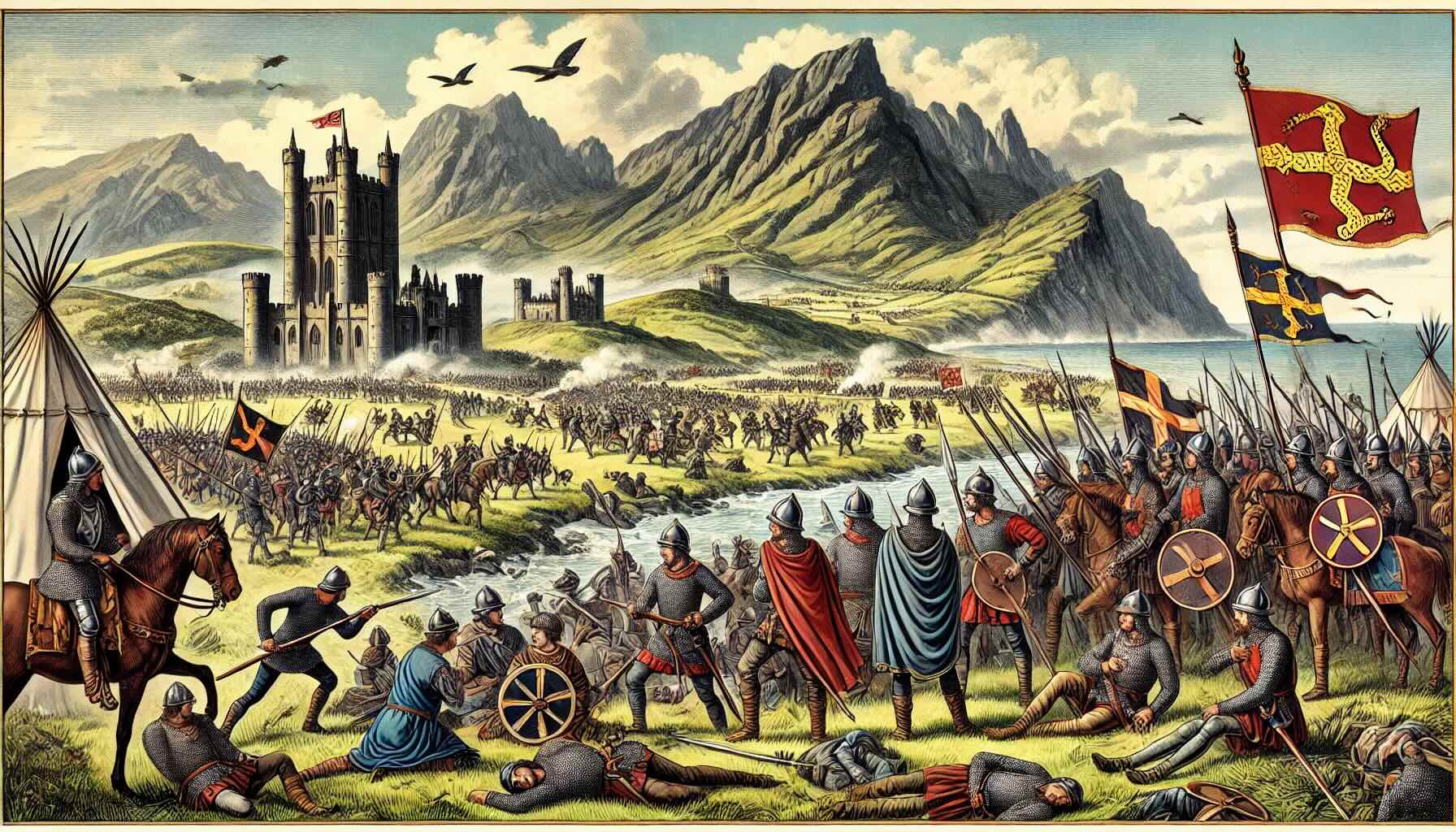
The Manx Revolt of 1275 was a significant uprising on the Isle of Man, a small island in the Irish Sea. This rebellion was led by Godred Magnusson, who sought to reclaim the throne from the Scots. The revolt was a response to the Scottish takeover after the death of the last Norse king of Mann. The conflict ended with the Battle of Ronaldsway, where the Scots decisively defeated the Manx forces. This event marked the end of Norse rule on the island and solidified Scottish control. Understanding this revolt provides insight into the turbulent history of the Isle of Man and its struggle for sovereignty.
Key Takeaways:
- The Manx Revolt of 1275 was a rebellion on the Isle of Man against Scottish rule, led by Guðrøðr Magnússon, with the decisive battle at Ronaldsway leading to Scottish control and the end of Norse influence.
- The legacy of the Manx Revolt of 1275 is still felt today, symbolizing Manx resistance to foreign rule, commemorated in local folklore, and shaping the island's identity and heritage.
The Manx Revolt of 1275: A Brief Overview
The Manx Revolt of 1275 was a significant uprising on the Isle of Man. This rebellion was against the rule of the Scottish king, Alexander III. The revolt was led by Guðrøðr Magnússon, a member of the island's royal family.
- The revolt was sparked by the death of the last Norse King of Mann, Magnús Óláfsson, in 1265.
- Guðrøðr Magnússon, the leader of the revolt, was the son of Magnús Óláfsson.
- The Isle of Man had been under Norse control for over 400 years before the revolt.
- The island's strategic location made it a valuable asset for both the Norse and Scottish crowns.
- The revolt was part of a larger struggle between the Scottish and Norwegian kingdoms for control of the Hebrides and the Isle of Man.
Key Figures in the Revolt
Several important figures played crucial roles in the Manx Revolt of 1275. Understanding their motivations and actions helps to paint a clearer picture of the conflict.
- Guðrøðr Magnússon was determined to reclaim his father's throne and restore Norse rule.
- Alexander III of Scotland sought to consolidate his control over the Isle of Man and the Hebrides.
- The Bishop of the Isles, Richard, supported the Scottish crown and played a role in quelling the revolt.
- The local Manx chieftains were divided in their loyalties, with some supporting Guðrøðr and others siding with the Scots.
- The Norwegian King, Magnus VI, was preoccupied with other conflicts and unable to provide significant support to the rebels.
The Course of the Revolt
The Manx Revolt of 1275 was marked by several key events and battles. These moments defined the course of the rebellion and its eventual outcome.
- The revolt began with Guðrøðr's return to the Isle of Man in early 1275.
- Initial skirmishes saw the rebels gaining control of several key strongholds on the island.
- The Scottish crown responded by sending a fleet and army to suppress the rebellion.
- The decisive battle took place at Ronaldsway, near Castletown, in October 1275.
- The rebels were defeated at Ronaldsway, with many, including Guðrøðr, killed in the battle.
Aftermath and Consequences
The aftermath of the Manx Revolt of 1275 had lasting effects on the Isle of Man and its people. The consequences of the rebellion shaped the island's future for years to come.
- The defeat of the rebels solidified Scottish control over the Isle of Man.
- The island was incorporated into the Scottish crown's territories, ending centuries of Norse rule.
- Many of the surviving rebels were executed or exiled, further weakening resistance to Scottish rule.
- The Bishop of the Isles, Richard, was rewarded for his loyalty to the Scottish crown.
- The revolt and its suppression marked the end of significant Norse influence in the region.
Legacy of the Manx Revolt
The legacy of the Manx Revolt of 1275 is still felt today. The rebellion and its suppression left a lasting impact on the Isle of Man's culture and history.
- The revolt is remembered as a symbol of Manx resistance to foreign rule.
- The battle of Ronaldsway is commemorated in local folklore and traditions.
- The end of Norse rule led to the gradual assimilation of the Manx people into Scottish and later English culture.
- The rebellion highlighted the strategic importance of the Isle of Man in medieval politics.
- The Manx Revolt of 1275 remains a significant event in the island's history, shaping its identity and heritage.
The Manx Revolt's Legacy
The Manx Revolt of 1275 stands as a pivotal moment in the Isle of Man's history. This uprising against Scottish rule showcased the islanders' fierce desire for autonomy. Though ultimately unsuccessful, the revolt highlighted the strategic importance of the Isle of Man in medieval politics. It also underscored the resilience and determination of the Manx people, traits that continue to define them today. The revolt's impact rippled through subsequent centuries, influencing the island's governance and cultural identity. Understanding this event offers valuable insights into the broader historical context of the British Isles. The Manx Revolt may have been a brief chapter, but its significance endures, reminding us of the timeless struggle for self-determination and the enduring spirit of a small yet proud community.
Frequently Asked Questions
Was this page helpful?
Our commitment to delivering trustworthy and engaging content is at the heart of what we do. Each fact on our site is contributed by real users like you, bringing a wealth of diverse insights and information. To ensure the highest standards of accuracy and reliability, our dedicated editors meticulously review each submission. This process guarantees that the facts we share are not only fascinating but also credible. Trust in our commitment to quality and authenticity as you explore and learn with us.
